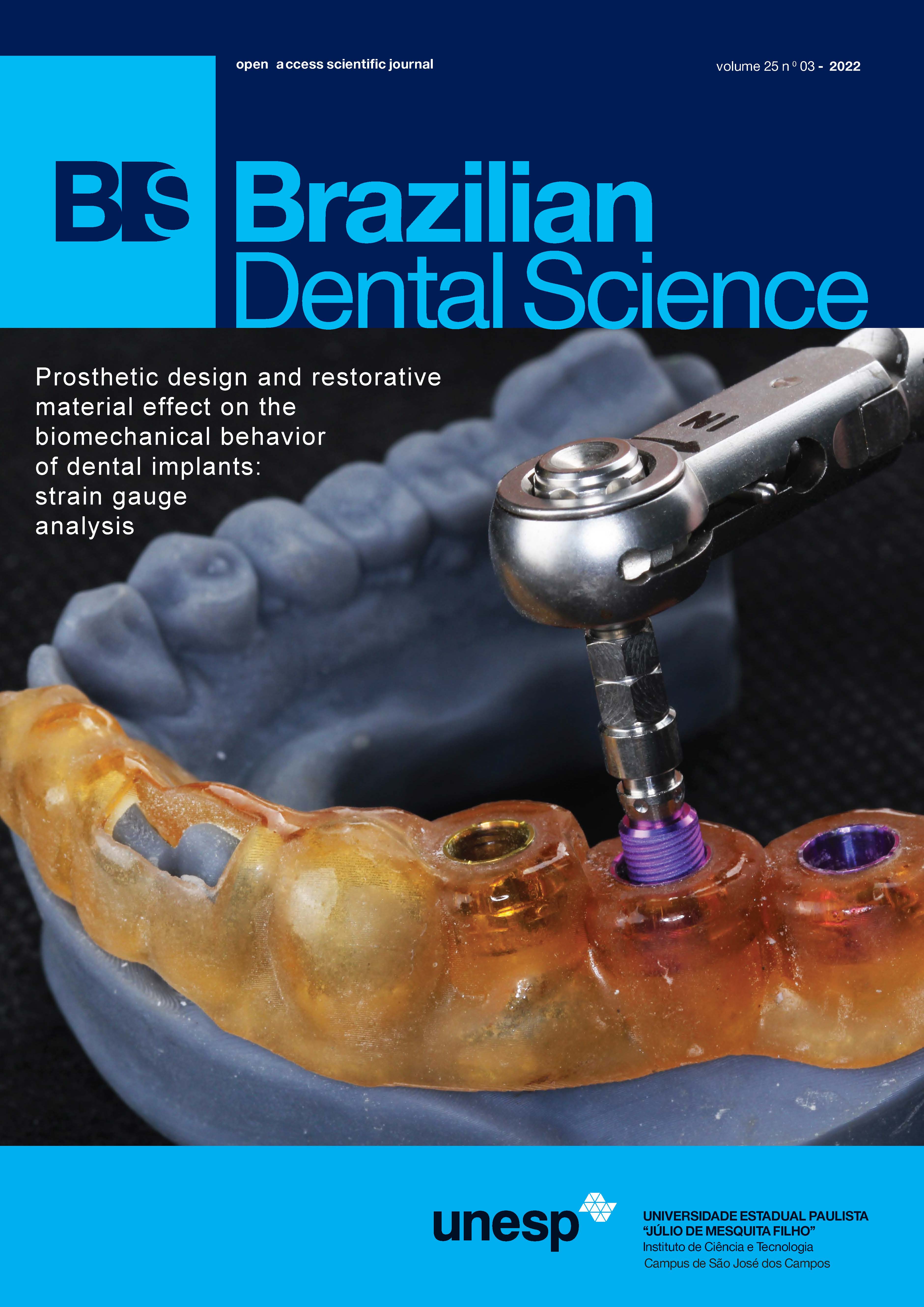Effect of silver-coated silica nanoparticles on the thermal conductivity of thermally activated acrylic resin
DOI:
https://doi.org/10.4322/bds.2022.e3271Resumo
Objective: Thermally activated acrylic resins (RAATs) are widely used in dentures as a base material due to their
good dimensional stability and biocompatibility. However, their low thermal conductivity is a disadvantage, as it
affects acceptance when using dental prostheses. Thus, the objective of this work was to measure the conduction
heat in RAATs with and without incorporation of silica and silver nanoparticles (NP) and rigid reline (RR).
Material and Methods: For this, samples were made and divided into 10 groups (n = 6). The first five groups
were 2-mm-thick samples: G1 (RAAT control), G2 (RAAT + RR control), G3 (RAAT and NP + RR), G4 (RAAT
+ RR and NP), and G5 (RAAT and RR modified by NP). In the other five groups, 8-mm-thick samples were
made: G6 (RAAT control), G7 (RAAT + RR control), G8 (RAAT and NP + RR), G9 (RAAT + RR and NP), and
G10 (RAAT and RR modified by NP). The heat that cross the surface of the specimens was quantified using a
wireless device. The data were submitted to two-factor ANOVA statistical analysis and Tukey´s test with a 5%
significance level. Results: After measuring the temperature variation as a function of time, it can be observed
that there was a statistically significant difference for thermal conduction between the control groups and those
modified with NP. Conclusion: Thus, it was possible to conclude that the NP improved the heat conduction in
RAAT and in the RR because the nanoparticles have a higher thermal conductivity.
KEYWORDS
Thermal conductivity; Acrylic resin; Nanoparticle; Silver.
Downloads
Downloads
Publicado
Como Citar
Edição
Seção
Licença
TRANSFERÊNCIA DE DIREITOS AUTORAIS E DECLARAÇÃO DE RESPONSABILIDADE
Toda a propriedade de direitos autorais do artigo "____________________________________________________________________" é transferido do autor(es) para a CIÊNCIA ODONTOLÓGICA BRASILEIRA, no caso do trabalho ser publicado. O artigo não foi publicado em outro lugar e não foi submetido simultaneamente para publicação em outra revista.
Vimos por meio deste, atestar que trabalho é original e não apresenta dados manipulados, fraude ou plágio. Fizemos contribuição científica significativa para o estudo e estamos cientes dos dados apresentados e de acordo com a versão final do artigo. Assumimos total responsabilidade pelos aspectos éticos do estudo.
Este texto deve ser impresso e assinado por todos os autores. A versão digitalizada deverá ser apresentada como arquivo suplementar durante o processo de submissão.




























